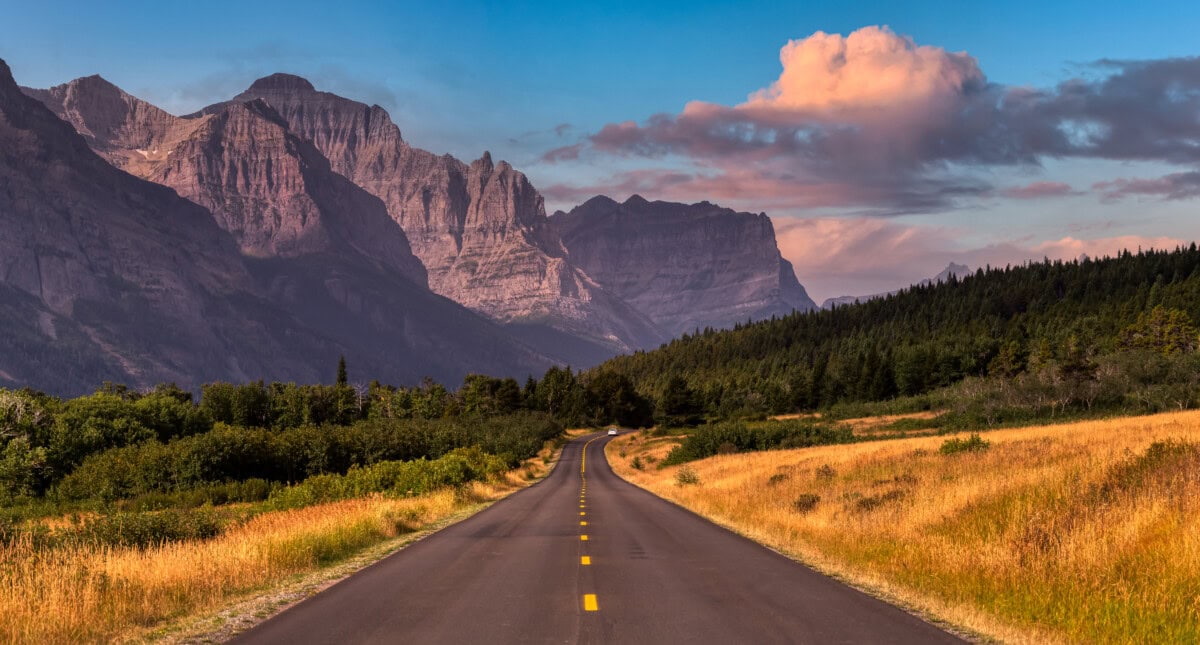If you’re planning on moving to Montana, add these cities to your list.
With natural beauty, diverse history, and lively cities, Montana has it all. Across its three distinct regions, there are rivers, glaciers, grasslands, and more in this expansive state. You can ride a horse, raft down a river, and shop at a bustling mall on the same day, for example. Even if you want to experience “the middle of nowhere,” Montana has you covered.
Known as Big Sky Country, Montana boasts expansive plains, sprawling forests, towering mountains, and flat buttes that give way to unobstructed views of clear, beautiful skies. Everywhere you go, it seems, there’s more to see.
Montana’s climate varies widely depending on where you live. In the mountainous west, winters are cold and snowy, and summers are warm and pleasant. As you move east over the Continental Divide into the High Plains, the climate is much drier, although winters are still very cold. Farthest to the east and lower in elevation, you’ll see cold winters and dry, hot summers.
Lastly, Montana’s population has grown consistently over the past decade, with most newcomers moving to the hip mountain towns of Bozeman and Whitefish. This has created a crazy housing market, with prices skyrocketing, demand plummeting, and record-low affordability.
So, which cities in the Treasure State are the best? In this Redfin article, we’ve uncovered the best places to live in Montana, ranking them on qualities such as affordability, navigability, and number of amenities. You can find more information about our methodology here or at the bottom of the article.
The best places to live in Montana
- Missoula, MT
- Bozeman, MT
- Helena, MT
- Billings, MT
- Great Falls, MT
- Kalispell, MT
- Whitefish, MT
- Butte, MT
- Livingston, MT
- Belgrade, MT

1. Missoula, MT
| Population: | 77,757 |
| Median Sale Price: | $599,000 |
| Median Rent Price: | $1,310 |
| Average Commute Time: | 16.6 minutes |
| Unemployment Rate: | 3.7% |
Home to the University of Montana, a thriving outdoor economy, stunning landscapes, and much more, Missoula tops our list as the best place to live in Montana. The city’s prime mountainous location, great weather, ample outdoor recreation opportunities, and easy navigability helped earn it a high score.
Missoula retains a small-town feel while containing all the big-city amenities you expect. Events and gatherings like the Farmers’ Market, the International Wildlife Film Festival, Germanfest, and more all add to the city’s charm and artistic spirit. You’ll experience a different kind of living in Missoula – one of community, exploration, and education. The natural beauty doesn’t hurt, either.
Missoula’s history adds to its charm. The city sits in an ancient lakebed, at the confluence of five mountain ranges which rise steeply on all sides. Indigenous peoples, including the Salish, Kootenia, and Shoshone, have long lived in the region and taken advantage of the narrow passages leading into the valley. The Lewis and Clark Expedition brought the first European settlers to the area.
Missoula’s climate is comparatively humid and mild, due to its location west of the Rocky Mountain peaks. Winters are cold and snowy, while summers are warm but not often hot. This means four-season recreation is enjoyable and plentiful. An increase in wildfires, smoke, drought, and heat waves are affecting the region, though, which is important to keep in mind.
Missoula homes for sale | Missoula houses for rent | Missoula apartments for rent
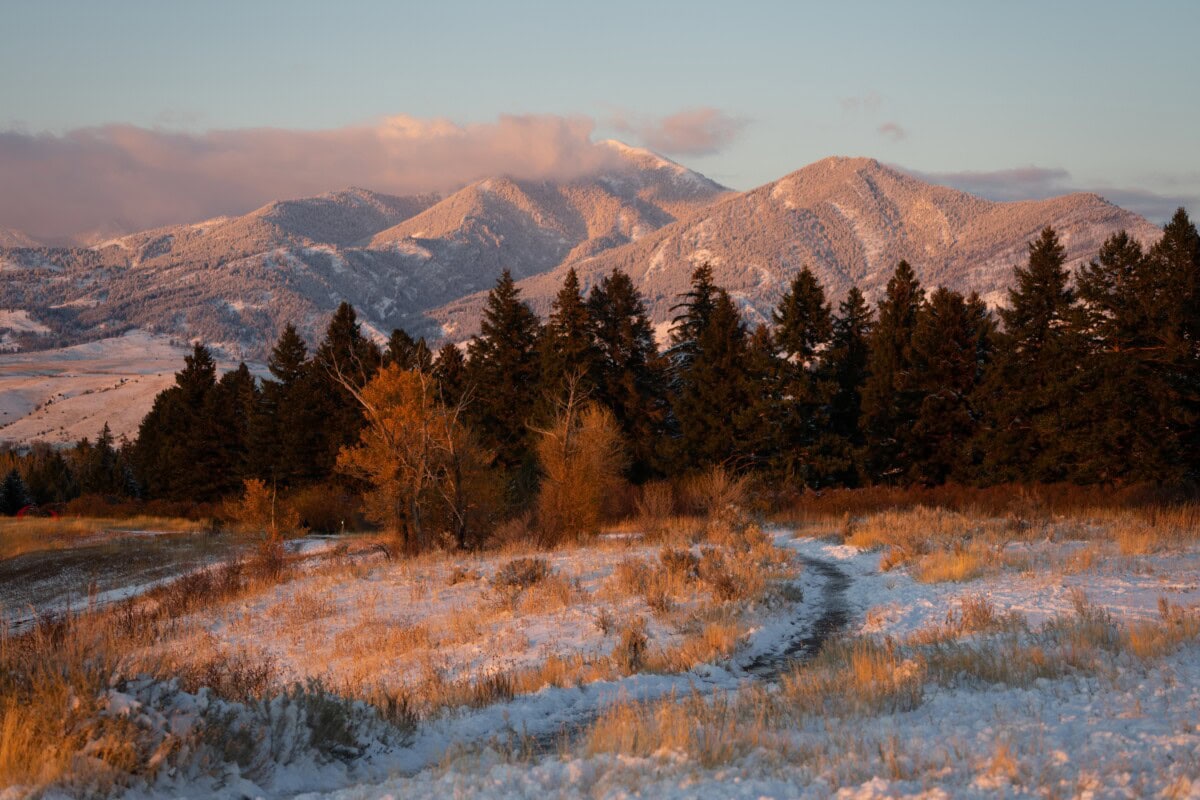
2. Bozeman, MT
| Population: | 57,305 |
| Median Sale Price: | $747,000 |
| Median Rent Price: | $1,900 |
| Average Commute Time: | 15.4 minutes |
| Unemployment Rate: | 2.5% |
Located at 4,800 feet in elevation in the foothills of the Rockies, Bozeman is second on our list. What was long a small town in the Rockies, Bozeman has since become a trendy, hip place to live. Whether it’s the 360-degree mountain views and incredible outdoor recreation, or the opportunity for growth and outlets for creativity, people love the city.
“Bozeman is perfect for people looking for outdoor adventure, community, and culture,” says the team at Visit Bozeman. “You’re surrounded by stunning natural landscapes, a welcoming and fast-growing community, and plenty of museums, theaters, music, and events throughout the year.”
The city has consistently ranked as the fastest-growing city of its size in the country. It has primarily attracted people from coastal metros looking for a small, lively mountain escape. Because of its popularity, though, Bozeman has become very expensive and even earned a disparaging nickname: Boz Angeles. Houses of all types regularly sell in the millions.
Eclectic, locally-owned shops and restaurants are everywhere in the city. Bozeman Taproom, Rice Fine Thai Cuisine, and Western Cafe are hotspots for all types of cuisine, while Heyday and Meridian Men are great places for souvenirs and clothing. Amenities are generally located near Downtown Bozeman.
Bozeman is a very snowy city, seeing upwards of 90 inches of snow per year. Winters can be quite cold, while summers are typically mild and sunny. Two ski resorts, Big Sky and Bridger Bowl, are within an hour’s drive, and cross country skiing trails snake through the city during the long winter.
Bozeman homes for sale | Bozeman houses for rent | Bozeman apartments for rent

3. Helena, MT
| Population: | 34,464 |
| Median Sale Price: | $480,000 |
| Median Rent Price: | $1,525 |
| Average Commute Time: | 13.7 minutes |
| Unemployment Rate: | 2.4% |
With its mix of history, beauty, and recreational opportunities, Helena earns the number three spot. The city was founded in the 1860s and embraces both the old and new – you can find old brick alleyways adjacent to modern buildings.
The capital of Montana, Helena began as a gold rush town and grew very quickly, becoming a wealthy city toward the end of the century. 50+ millionaires lived in Helena by 1888. This concentration of wealth contributed to the dozens of elaborate Victorian buildings that dot the landscape, the most prominent of which is the Cathedral of St. Helena. Today, Downtown Helena sits at what was the epicenter of the gold rush and is lined with local shops, restaurants, and parks.
Popular dining spots include the Windbag Saloon & Grill, known for its hearty meals, and On Broadway, offering upscale Italian food.
The city’s gold rush roots influenced more than just its wealth. Old prospector trails winding around the city’s foothills have been turned into more than 400 miles of multi-use path, 80 of which start right in downtown. Helena was even named an IMBA Silver Ride Center for mountain biking, one of only 16 in the world, due to the abundance and quality of trails.
Helena homes for sale | Helena houses for rent | Helena apartments for rent
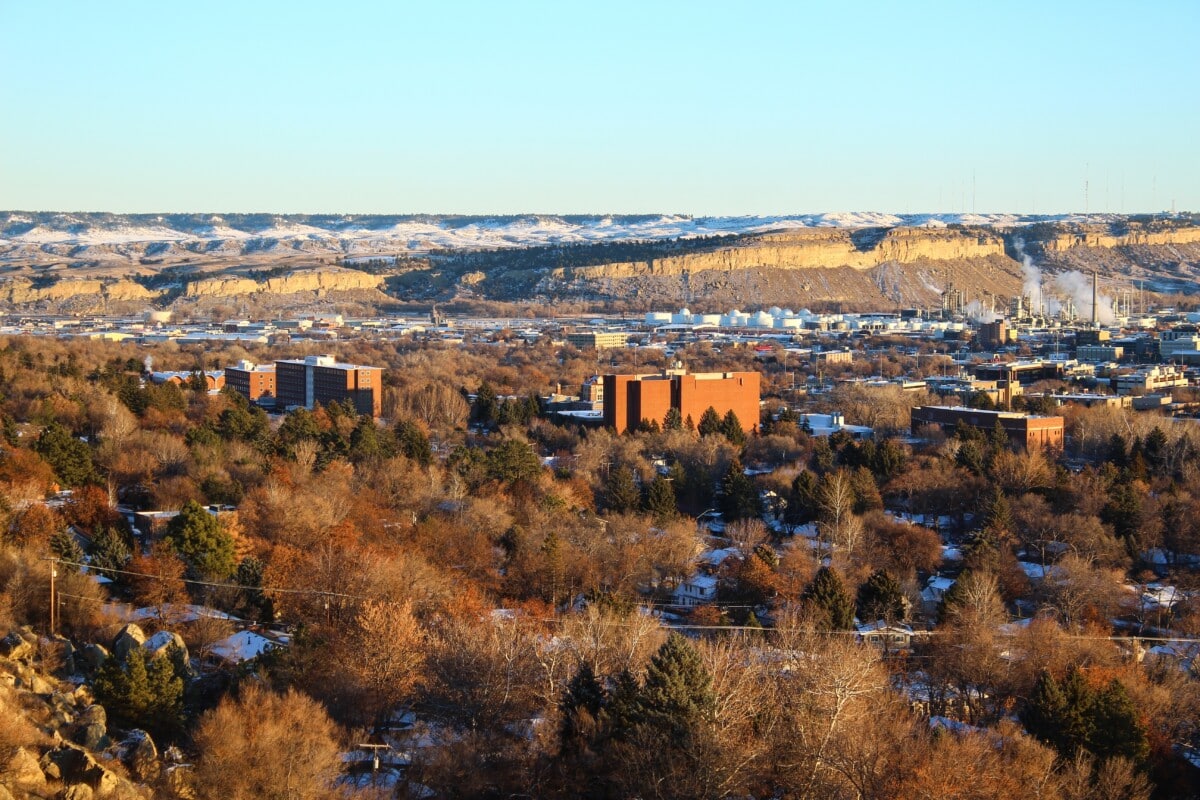
4. Billings, MT
| Population: | 120,864 |
| Median Sale Price: | $419,000 |
| Median Rent Price: | $1,225 |
| Average Commute Time: | 16.7 minutes |
| Unemployment Rate: | 2.4% |
Situated along the Yellowstone River in south-central Montana, Billings is a thriving city known for its old western character, Midwest charm, and access to the outdoors. An affordable cost of living, plenty of amenities, and economic stability help make it a great place to live.
As Montana’s largest city, Billings offers an urban environment with the scenic backdrop of the Rimrocks to the north and east – and seven mountain ranges further out. The Beartooth Mountains to the southwest are the most prominent. Hills, plains, forests, and streams make up the rest of the awe-inspiring landscape, perfect for adventures of all kinds.
Billings’ modern history can be traced back to the Lewis and Clark Expedition, when Clark arrived at Pompey’s Pillar, now a popular state park. About 80 years later, settlers arrived to take advantage of the great lumber in the area, and a railroad was built not long after. Billings was established in 1882 and quickly grew to become one of the state’s largest cities.
Today, Billings has become the economic epicenter for multiple states. In fact, the city’s regional influence is nearly unmatched, making it the place to be for job hunters. Even with its large status, Billings manages to retain its small-town western roots and larger than life outdoor space. Riverfront Park and Two Moon Park are two great spots to enjoy the scenery.
Billings homes for sale | Billings houses for rent | Billings apartments for rent
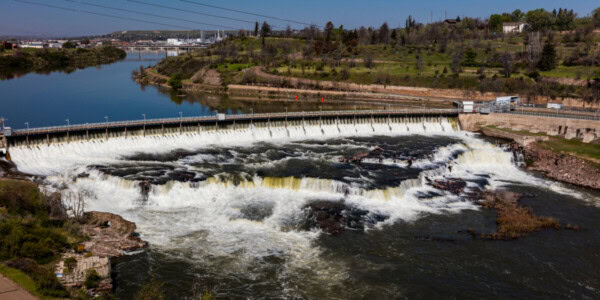
5. Great Falls, MT
| Population: | 60,422 |
| Median Sale Price: | $385,000 |
| Median Rent Price: | $1,040 |
| Average Commute Time: | 14.7 minutes |
| Unemployment Rate: | 2.3% |
Great Falls is fairly small in size, but boasts a strong industry and very creative populace. Named after the many waterfalls in the area, Great Falls has provided electricity through dams and water for agriculture for over a century via the iconic Missouri River. The five dams (and waterfalls) along the river helped give the city the nickname “Electric City.”
Great Falls was the largest city in Montana from 1950 to 1970 due to its thriving industry and affordable land. The cost of living has remained very reasonable.
Most famously, Great Falls is an emblem of the American West. The city seemingly begs you to get out and explore the vast wilderness. Located in the high plains, Great Falls is nestled between four mountain ranges, three rivers, and home to vistas as far as the eye can see. More than 1 million tourists visit the city each year.
This renowned landscape has inspired many famous artists to capture its beauty, earning Great Falls the moniker “The Western Art Capital of the World.” You can find the most famous artwork at the C.M. Russell Museum or see more modern pieces during Western Art Week. A total of ten museums dot the city’s gridded streets.
Great Falls’ climate is fairly dry, with cold, snowy winters and warm summers. Afternoon thunderstorms in the summer are common, and is when a majority of precipitation falls during the year. Like most cities just east of the Rocky Mountains, strong Chinook Winds can cause brief, unseasonably warm winter temperatures.
Great Falls homes for sale | Great Falls houses for rent | Great Falls apartments for rent

6. Kalispell, MT
| Population: | 29,886 |
| Median Sale Price: | $698,000 |
| Median Rent Price: | $1,315 |
| Average Commute Time: | 14.3 minutes |
| Unemployment Rate: | 4.2% |
The sixth-best place to live in Montana on our list, Kalispell is the gateway to Glacier National Park and the hub of Northwestern Montana. A former railroad town turned industrial and commercial hub, Kalispell is primarily known for its outdoor recreation, natural wonders, and small-town charm. People are flocking to enjoy this peaceful way of life, too: The Kalispell region was the fastest-growing city in Montana in 2023.
Kalispell embraces its role in Indigenous history. Numerous tribes lived and traveled through the fertile region, namely the Salish and Pend d’Oreille. Kalispell’s name comes from “Kalispel,” a common name for the Pend d’Oreille peoples, for example. You also have the option to learn Montana Salish, either as a student or adult, through local Salish and Kootenai tribal schools at the Flathead Indian Reservation.
The beloved Flathead Cherry Festival also happens within the reservation every July, along Flathead Lake. Be sure to come hungry – there are food carts and more Flathead Cherries than you can eat waiting for you.
Kalispell homes for sale | Kalispell houses for rent | Kalispell apartments for rent
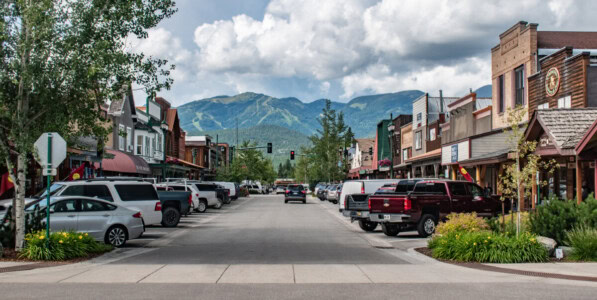
7. Whitefish, MT
| Population: | 9,163 |
| Median Sale Price: | $804,750 |
| Median Rent Price: | $2,895 |
| Average Commute Time: | 16.7 minutes |
| Unemployment Rate: | 2.9% |
Just north of Kalispell, Whitefish is a fast-growing, upscale vacation town known for its outdoor recreation, natural beauty, and mountain views. The city is situated along crystal clear Whitefish Lake and home to two ski resorts, plenty of luxury lodging, and friendly, locally-owned businesses. Paired with remarkable weather, these high-end amenities have led an influx of people to the area, although many just seasonally.
The sunny and mild summer is generally when Whitefish is most crowded, but all four seasons – especially powdery winters – have something special to offer. Glacier National Park is also right in your backyard, just 30 minutes away. No matter what you want to do outside, you’ll find it in Whitefish.
Plenty of local events keep residents connected during the year, with most happening downtown. The Under the Big Sky Music Festival, Huckleberry Days Arts Festival, and a weekly Tuesday farmers market are among the most popular. You can also get together with friends and family at high-end restaurants, local brunch spots, and lively coffee shops. Most everything is walkable from downtown.
Whitefish homes for sale | Whitefish houses for rent | Whitefish apartments for rent
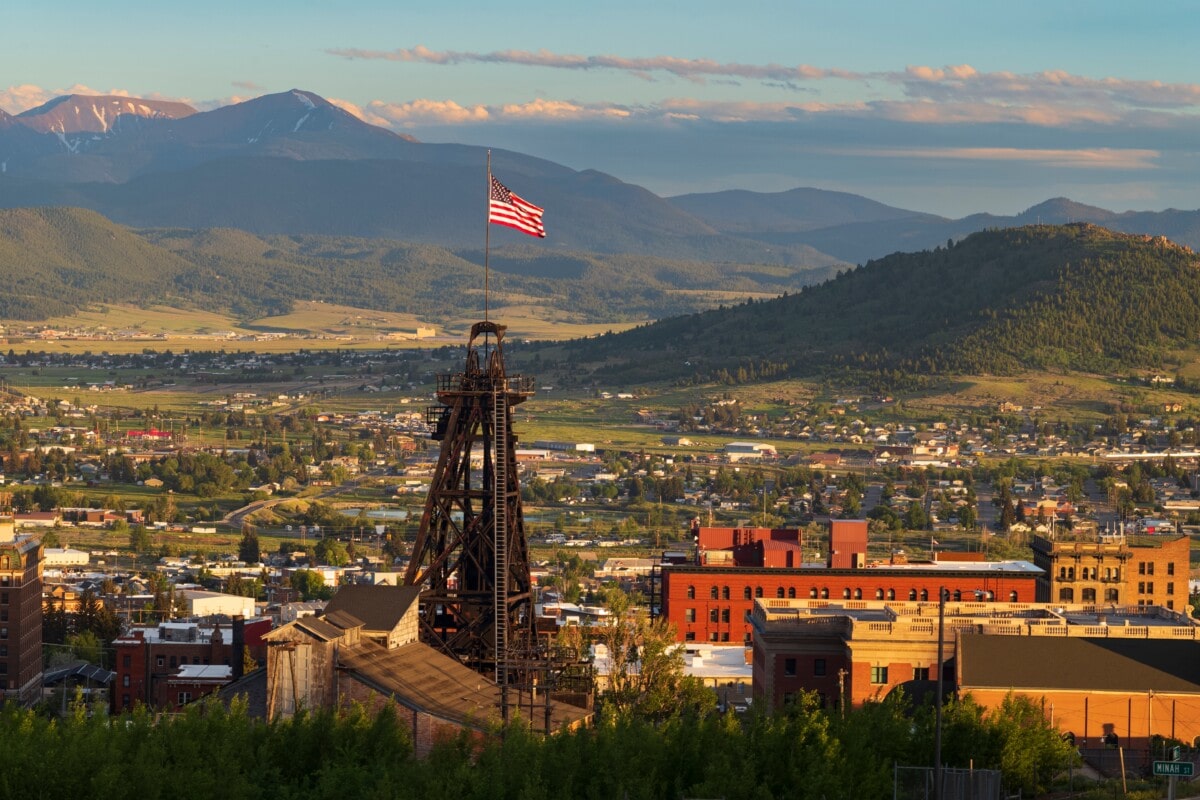
8. Butte, MT
| Population: | 35,701 |
| Median Sale Price: | $323,000 |
| Median Rent Price: | $800 |
| Average Commute Time: | 16.2 minutes |
| Unemployment Rate: | 3.1% |
Butte, officially Butte-Silver Bow, is a small city about 100 miles northwest of Bozeman. Butte was the first major city in Montana and retains its old-western atmosphere to this day. Mining has played a major role in the city’s economy and culture since its founding and continues to this day. Today, natural beauty, an affordable cost of living, and access to outdoor recreation make it a desirable place to live.
Butte’s long mining history brought jobs, wealth, and people to the city. However, it has also harmed the environment. When one of the largest mines shut down in 1982, Butte unknowingly inherited one of the largest Superfund sites in the country The Berkeley Pit, as it’s now known, is located on the edge of town and was the site of open-pit mining. The pit is now filled with toxic groundwater, which is still rising today.
The Berkeley Pit has become a tourist attraction of sorts, with a viewing stand and memorial plaza dedicated to lost miners. It’s infamous for its role in bird migrations, as well – birds who land on it for more than a few hours will die. Montana has funded efforts for 40 years to scare birds from landing on the lake.
Butte’s history also includes a robust Chinatown and immigrant population (similar to most of Montana), including the oldest continually-operating Chinese restaurant in the country.
Butte homes for sale | Butte houses for rent | Butte apartments for rent

9. Livingston, MT
| Population: | 8,908 |
| Median Sale Price: | $519,000 |
| Median Rent Price: | $1,380 |
| Average Commute Time: | 23.2 minutes |
| Unemployment Rate: | 1.4% |
Just 30 minutes east of Bozeman, Livingston is the ninth-best place to live in Montana on our list. Livingston is a picturesque town known as being the gateway to Yellowstone National Park, but is home to plenty of natural wonders in its own backyard. The city sits in aptly-named Paradise Valley, flanked by the rugged Absaroka and Gallatin Mountains on either side. The Yellowstone River flows through downtown before reaching open plains and thick forests.
There’s plenty to do in the town, too. Livingston is a small railroad town, but you can still learn something new, grab a great coffee, and sit down for a nice dinner all within a mile from each other. Campione and the Murray Bar offer some of the best experiences. Unique shops and historic buildings also line the brick-filled streets.
Importantly, though, Livingston is fairly expensive for homeowners, with house prices about $80,000 above the national median. People continue to be attracted to small-town living in the rugged American West.
Livingston homes for sale | Livingston houses for rent | Livingston apartments for rent
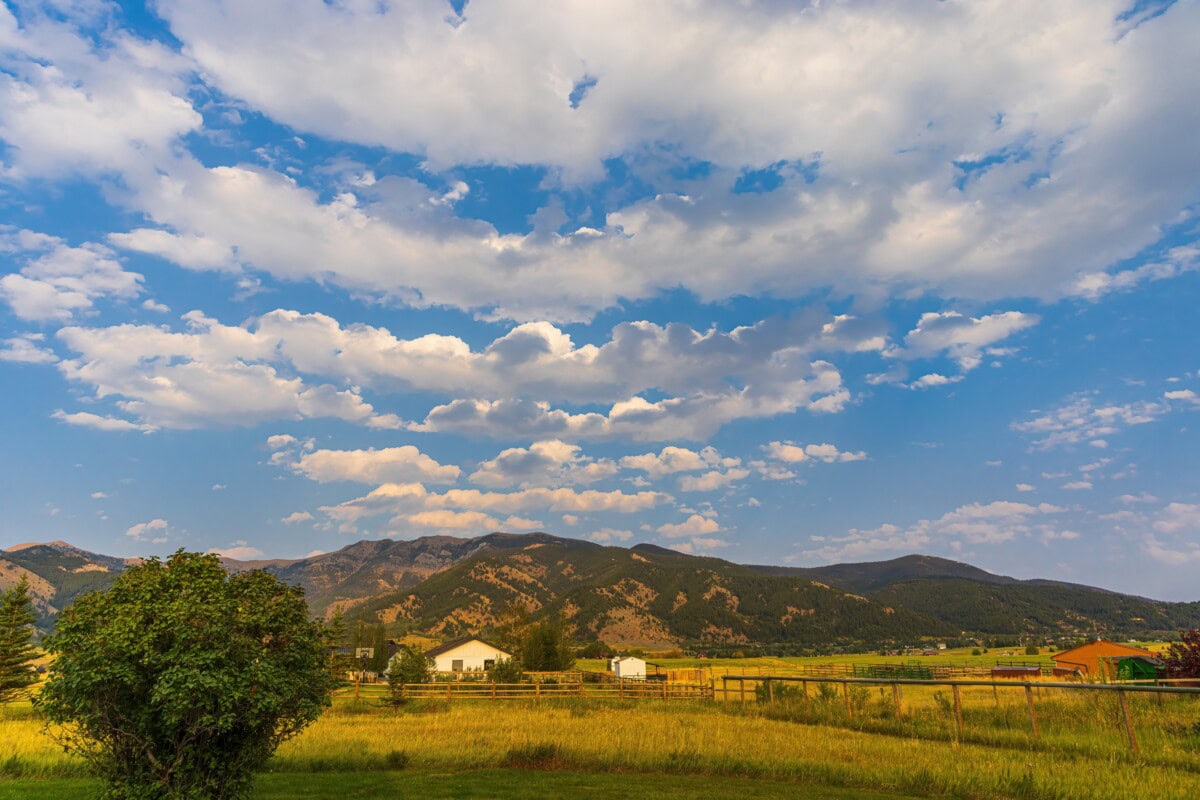
10. Belgrade, MT
| Population: | 12,509 |
| Median Sale Price: | $540,000 |
| Median Rent Price: | $2,150 |
| Average Commute Time: | 23.4 minutes |
| Unemployment Rate: | 0.6% |
Belgrade, a suburb 20 minutes from Bozeman, rounds out our list of the best places to live in Montana. People looking for more affordable homes without sacrificing the Bozeman lifestyle will feel right at home in Belgrade. Plus, with a historic city center and unique shops and events, you’ll be sure to find something to love. The Fall Festival is the most popular among locals.
Belgrade is fairly rural and has a history of agriculture, similar to most towns in the Gallatin Valley. The area has easy access to water, plenty of fertile land, and favorable summer weather for wheat, oats, and other crops. A complicated network of irrigation canals that have been used for a century carve through the landscape for dozens of miles, influencing local water use and regulation.
The four seasons heavily influence life in Belgrade. Winter is perfect for enjoying the snow and spending time inside, while summer is ideal for exploring the great outdoors. Spring and fall are great in-between seasons for most activities, but are dependent on weather.
Belgrade homes for sale | Belgrade houses for rent | Belgrade apartments for rent
Methodology
Redfin’s Best Places to Live rankings are meant to help home searchers make an informed decision when choosing where to live. To attempt to measure the overall quality of a metro area, each ranking takes into account several key factors, including access to healthcare, open outdoor space, navigability, housing trends, employment statistics, income, and travel time to work. Only metros with a population of 7,500 or greater were considered for our Montana list. More information about our methodology can be found here.
Data valid April 2025. This article is for informational and educational purposes only.

